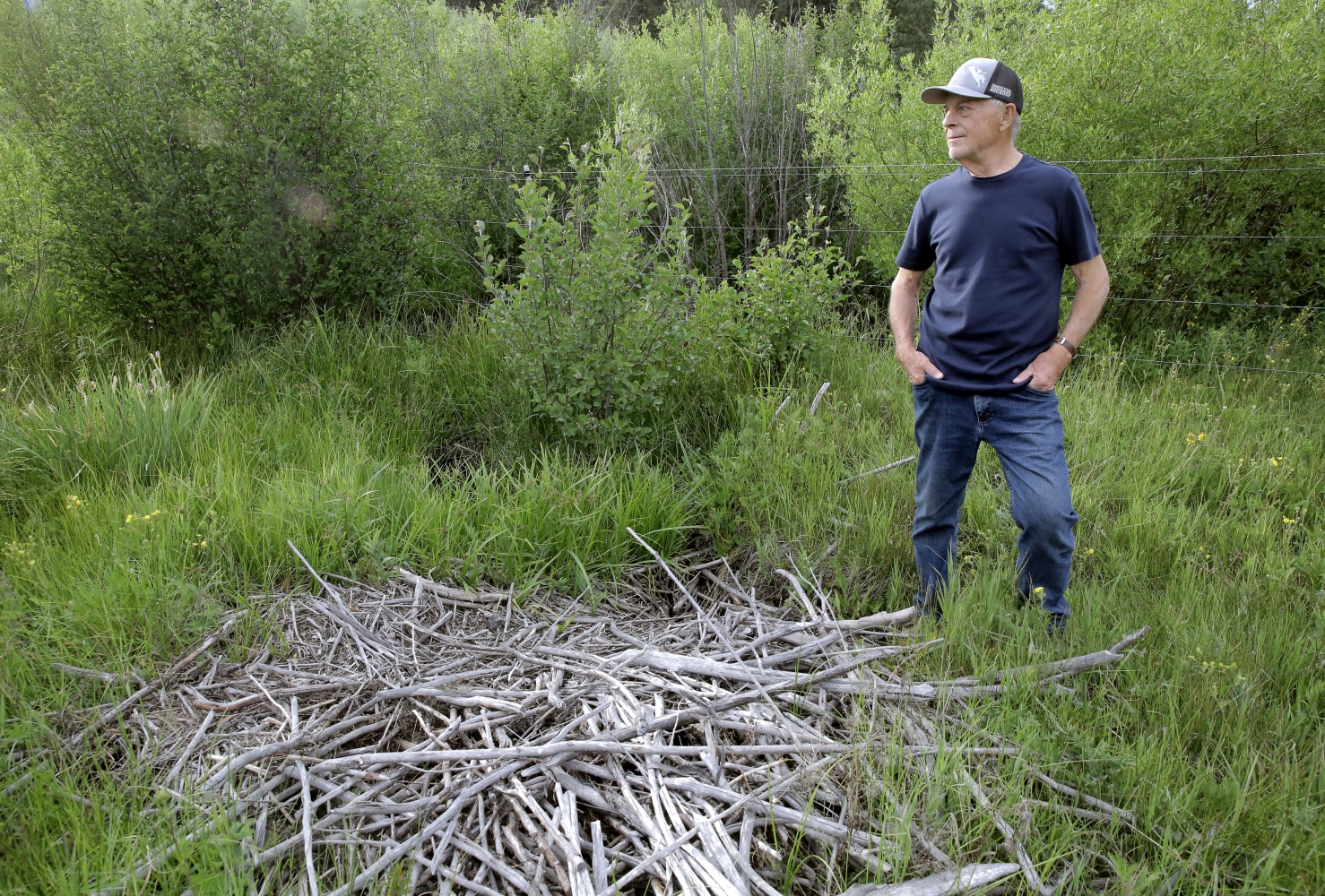

Published on: 08/01/2025
This news was posted by Oregon Today News
Description
Ron Jackson has a 23-acre ranch outside of Prineville, Oregon. A little creek travels across it, attracting wild turkey and deer. And while he doesn’t see them very often, there are also beaver hiding in his wetland.
“They make a nice sharp point, cutting down our trees,” Jackson said. “And I see where they’ve taken the branches and made little dams.”
Beaver dams help keep the foliage under control. They also mean the water sits on his land longer and has time to seep into the ground. That brings up the water table, allowing plants to grow longer and keep things wetter, and thus also helps inhibit wildfires.
“Some of this stuff grows so wild, they’re doing me a favor,” Jackson said. “I don’t want to run them off, unless they become a huge pest. And they’re not.”

Jackson is a retired pilot, so he can enjoy just watching the wildlife. He doesn’t have to make money off the land.
An hour away in Madras, Jeremy Watson traps beavers on an 83,000-acre working beef ranch. There are about six beaver colonies. Each one contains maybe eight beavers. Watson leaves four colonies alone because they’re not causing any problems.
But he’s regularly trapping at the other two.
“Where it is, it’s a crossing. And so (the water) blocks up the crossing and it washes the bridge out,” Watson said.
When beavers are trapped, it’s usually because they’re causing this kind of damage. Some are shot for sport. But the taking of any beaver in Oregon is becoming increasingly regulated, because so much money is being spent on bringing them back into Oregon’s landscapes.
After years of focusing on salmon, scientists are now understanding that beavers are very important for salmon. Beaver dams are thought do everything from cooling and cleaning the water, to providing deep pools for young salmon to live in, as well as helping to ensure there are bugs to eat and willows for shade and protection.

The Oregon Legislature has recently passed two bills that increase beaver protections. House Bill 3464 reclassified them as “furbearing” animals, rather than “predatory” animals. In practical terms, landowners must now get a permit to remove a problem beaver and they must report the removal to the Oregon Department of Fish and Wildlife.
“To me that’s a good bill,” said Watson, “because not everybody can just go shoot them now.”
Salem passed another beaver protection law this year, House Bill 3932.
Its sponsor, Oregon Rep. Pam Marsh, said it protects beavers by restricting trapping along waterways on public land that are “impaired.” That is waterways that suffer from high temperatures, excessive sediment, low oxygen or high nutrient levels.
“There’s a lot of associated issues as to what’s going to turn around an impaired waterway,” Marsh said. “But what we know is that beavers can be a helpful element. So that’s what we’re doing.”
Of Oregon’s 300,000 miles of rivers, about a third are classified as impaired by the Oregon Department of Environmental Quality.
That’s a lot of water, said trapper Jeremy Watson, who thinks this new law goes too far. He said the law takes away an activity that Oregonians have participated in for generations.
“You’re taking these rights away on something that they’re saying is a problem, but it’s not a problem,” Watson said. “There is no shortage of beavers in the state of Oregon.”

Watson also said many beavers don’t actually help cool or clean the water — an issue that scientists are still researching.
But other people, like retired habitat manager Fran Recht, welcome the new beaver protection laws. She said she’s particularly appreciative of the way beavers protect drinking water with their dams and dampen the forest, helping to protect against wildfires.
“With the climate crisis and fires and droughts, we’ve got to get beavers back on the landscape,” Recht said. “And one of the big tools is restricting hunting and trapping.”
Recht is against trapping primarily because it happens during the pupping and mating season. That makes it hard for beaver populations to grow.
Many people also don’t like the fact that when beavers are trapped underwater, if they’re not killed instantly, they slowly drown.
While environmentalists and trappers disagree on some issues, there appears to be a consensus that what Oregon really needs is more beaver habitat. There are lots of efforts to create it by building artificial beaver dams across Oregon.
Chris Gannon, who directs the Crooked River Watershed Council in Prineville, said creating beaver habitat is not as easy as it sounds. He said it can take up to 10 years for an artificial beaver pond to grow the vegetation needed to support an actual beaver.
“It took a long time for these systems to degrade. It took a long time to trap beavers and virtually drive them to near extinction,” Gannon said. “So it’s going to take some time to bring them back to any kind of significant numbers.”
Meanwhile, the Beaver State’s eponymous animal seems to be enjoying a moment.
Beaver protection ideas continue to circulate through Salem, and the Oregon Department of Fish and Wildlife’s beaver commission is several years into its Beaver Action Plan.
News Source : https://www.opb.org/article/2025/08/01/oregon-beaver-conservation-animals-law-wildfire-house-bill-3464-3932/
Other Related News
08/01/2025
Police responded to reports of gunfire at an Extended Stay America hotel Friday evening ta...
08/01/2025
As public media is threatened after cuts from Trump administration Indigenous radio also f...
08/01/2025
After lawmakers rescinded public broadcasting funds earlier this month KRVM-FM is seeking ...
08/01/2025
The Corporation for Public Broadcasting has long helped pay for PBS NPR and 1500 local rad...
08/01/2025











